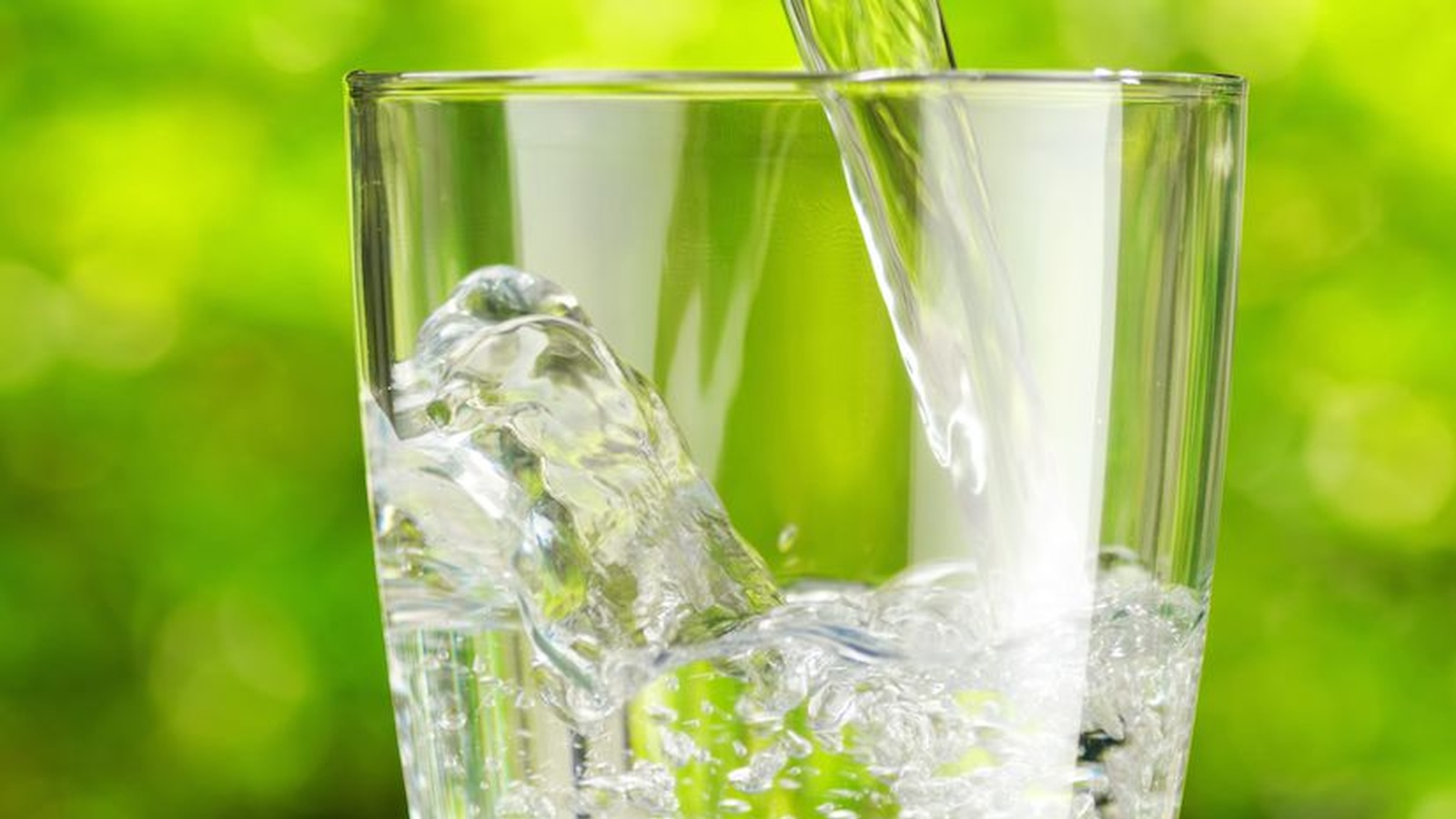What Water Filter Should I Be Using?
Purchasing a water filtration system can be overwhelming given there are so many different types to choose from.
In this article, understand the differences and basic pros and cons between between common water filter technologies so you can make an informed purchasing decision.
Why Use A Water Filter?
Have you ever wondered how safe your tap water is, or been turned off by its after taste? American tap water contains fluoride and other pollutants and a water filtration system is a good starting point to remove these. This article takes the guess work out of choosing the right water filter for your home.
Read more here about how safe your drinking water really is: http://www.foodmatters.tv/...
The Nitty Gritty Of Filter Types And Technologies
Although there are hundreds of brands of home water filters, they all rely on a small number of technologies to remove contaminants. That does not mean that every filter that uses a given technology is as good as another, but it does mean that you can get a good idea of the general pros and cons of the different systems relatively easily.
A few tips to keep in mind:
- Some filters use a combination of technologies, while others rely on just one.
- To ensure that a filter removes a particular contaminant, verify that it is certified for that contaminant by a reputable, independent agency. For example, some carbon filters can remove chloramine but others cannot. Filters vary widely in quality.
- Some filters are labeled “NSF certified.” NSF is a reputable product evaluation company, but its certifications are not all the same. It may certify that a filter will improve water’s taste and odor but not necessarily guarantee that it will remove any specific contaminants. Read the fine print.
- EWG’s water filter guide only includes filters that have been certified by the California Department of Public Health and/or NSF to reduce one or more common drinking water contaminants.
The Basics Of Common Water Filter Technologies
- Carbon/Activated Carbon:Activated carbon chemically bonds with and removes some contaminants in water filtered through it. Carbon filters vary greatly in effectiveness: Some just remove chlorine and improve taste and odor, while others remove a wide range of contaminants including asbestos, lead, mercury and volatile organic compounds (VOCs).However, activated carbon cannot effectively remove common “inorganic” pollutants such as arsenic, fluoride, hexavalent chromium, nitrate and perchlorate. Generally, carbon filters come in two forms, carbon block and granulated activated carbon.
- Carbon Block: Carbon block filters contain pulverized activated carbon that is shaped into blocks under high pressure. They are typically more effective than granulated activated carbon filters because they have more surface area. Their effectiveness depends in part on how quickly water flows through.
- Granulated Activated Carbon: These filters contain fine grains of activated carbon. They are typically less effective than carbon block filters because they have a smaller surface area of activated carbon. Their effectiveness also depends on how quickly water flows through.
- Ceramic: Ceramic filters have very small holes throughout the material that block solid contaminants such as cysts and sediments. They do not remove chemical contaminants.
- Deionization: These filters use an ion exchange process that removes mineral salts and other electrically charged molecules (ions) from water. The process cannot remove non-ionic contaminants (including trihalomethanes and other common volatile organic compounds) or microorganisms.EWG’s water filter guide does not include any filters based on this technology.
- Distillation: This technology heats water enough to vaporize it and then condenses the steam back into water. The process removes minerals, many bacteria and viruses and chemicals that have a higher boiling point than water. It cannot remove chlorine, trihalomethanes or volatile organic chemicals (VOCs). EWG’s water filter guide does not include any filters based on this technology.
- Fibredyne block:This is a proprietary type of carbon block filter that claims to have a higher sediment holding capacity than other carbon block filters.
- Ion Exchange: This technology passes water over a resin that replaces undesirable ions with others that are more desirable. One common application is water softening, which replaces calcium and magnesium with sodium. The resin must be periodically “recharged” with replacement ions.
- Mechanical Filters: Like ceramic filters, these filters are riddled with small holes that remove contaminants such as cysts and sediments. They are often used in conjunction with other kinds of technologies, but sometimes are used alone. They cannot remove chemical contaminants.
- Ozone: Ozone kills bacteria and other microorganisms and is often used in conjunction with other filtering technologies. It is not effective in removing chemical contaminants. EWG’s water filter guide does not include any filters based on this technology.
- Reverse Osmosis: This process pushes water through a semi-permeable membrane that blocks particles larger than water molecules. Reverse osmosis can remove many contaminants not removed by activated carbon, including arsenic, fluoride, hexavalent chromium, nitrates and perchlorate. However, reverse osmosis does not remove chlorine, trihalomethanes or volatile organic chemicals (VOCs). Many reverse osmosis systems include an activated carbon component than can remove these other contaminants. Quality can vary tremendously in both the membrane system and the carbon filter typically used with it. Consumers should also be aware that reverse osmosis filters use 3-to-20 times more water than they produce. Because they waste quite a bit of water, they are best used for drinking and cooking water only.
- UV (ultraviolet): These systems use ultraviolet light to kill bacteria and other microorganisms. They cannot remove chemical contaminants. EWG’s water filter guide does not include any filters based on this technology.
- Water Softeners: These devices typically use an ion exchange process to lower levels of calcium and magnesium (which can build up in plumbing and fixtures) as well barium and certain forms of radium. They do not remove most other contaminants. Since water softeners usually replace calcium and magnesium with sodium, treated water typically has high sodium content. Some people may be advised by their physicians to avoid softened water. For the same reason, it is also not recommended for watering plants and gardens.
The Basic Pros and Cons Of Each Water Filter Type
| Type |
Description | Pros |
Cons |
| Pitcher/ Large Dispenser |
Pitchers or large dispensers are typically fitted with an activated carbon filter that can remove contaminants and improve taste and odor. Models vary, but many reduce chlorine, lead, mercury and (less frequently) disinfection by products. This filter style works well for filtering drinking water and can be stored in the refrigerator. |
Inexpensive. No installation required. Available in various sizes and styles. |
If filters are replaced regularly, yearly cost may equal expense of faucet, countertop or under-sink filters. Can require frequent filter changes. Filtering is slow. |
| Faucet Mounted | Faucet-mounted filters attach directly to the end of the faucet. Most can be pivoted to an "on" or "off" position, allowing you to collect filtered water for drinking and cooking. This filter style typically uses an activated carbon filter that can remove contaminants and improve taste and odor. Models vary, but many reduce chlorine, lead, mercury and (less frequently) disinfection byproducts. |
Relatively inexpensive. Easy to install. Allows user to switch between filtered and unfiltered water. Filtration is fast enough to fill cooking pots. |
Does not work with all faucet styles. May slow down faucet flow rate. Typically must change filter more frequently than with countertop or under-sink filters. |
| On-counter | On-Counter filters typically sit on the counter, with a line connecting directly to the faucet. A diverter value allows you to switch between filtered and unfiltered water. You collect filtered water from an extra spout or faucet on the filter unit. Models use a range of technologies, including activated carbon and reverse osmosis. Effectiveness varies widely between models, but many on-counter filters will reduce a wide array of contaminants. |
May allow user to switch between filtered and unfiltered water. Typically requires relatively infrequent filter changes. Ideal for filtering both drinking and cooking water. |
Requires installation and possibly plumbing modification. Can be expensive, though not always. |
| Under-sink | Under-Sink filters are mounted underneath the kitchen sink, where they are fitted to the water supply line. Some models have a separate spout or faucet for water collection. Models use a range of technologies, including activated carbon to reverse osmosis. Effectiveness varies widely between models, but many on-counter filters will reduce a wide array of contaminants. |
Ideal for filtering both drinking and cooking water. Placed out-of-sight under the sink. Typically requires filter changes relatively infrequently. |
Requires installation and possible plumbing modification. Can be expensive, though not always. |
In the comments section below, tell us what water filter system you use and why!
If you haven’t already, join our free global challenge at www.GetOffTheGluten.com to receive daily recipes & health tips, access to our private group for support and inspiration, plus before and after testing to track your progress in key areas of your life such as weight, sleep, bloating, skin-conditions, mental health and more!









